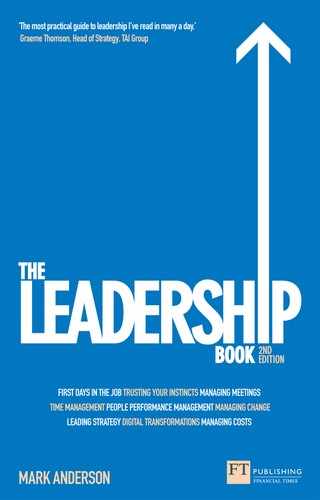The Leadership7
In the first edition of The Leadership Book I gave six items a leadership rating of ‘Leadership6’, which I described as ‘absolute priorities’ as a group without any further explanation or indication as to how I believed they linked together. In this edition I have expanded the group to seven under the title ‘Leadership7’. These seven are:
- Setting and selling a vision – the ability to describe a credible future.
- Leading strategy – leading the organisation towards that future.
- Leadership priorities – setting the key priorities that ensure strategy is focused.
- Forming your leadership team – building the key team that will support you in meeting your goals.
- Your team is more skilled than you– recognising with humility that to succeed you need colleagues better than you.
- Credibility from repetition – conveying consistency by saying the same things.
- Digital transformations – becoming a digital leader in the new industrial revolution.
It would undermine the credibility of this book as a whole to suggest that anything not on this list is unimportant, but through the concept of the Leadership7 I am trying to capture the very essence of great and organisation-changing leadership.
What is indubitably clear from writing and revising this book is that leadership is an immense challenge and one that is becoming harder as the pace of change intensifies. It requires the leader to execute everything in this book – and more – which is inevitably a juggling act beyond the capability of many people. So I say to current and future leaders that, on the basis that you can’t get everything right (and indeed won’t if you focus on everything) then the Leadership7 is your core; it is the essential toolkit for a foundation of great leadership. Without excelling in at least these areas, leaders are likely to fail.
The Leadership7 doesn’t unfortunately lend itself to an easily memorable acronym, but if leaders can at least remember:
- Vision
- Strategy
- Priorities
- Team formation
- Excellent colleagues
- Repetition
- Digital leadership
… they will have the foundations of what it is they most need to remember and build on. I say elsewhere that great leaders are like maestros leading an orchestra – they get the best out of players most of whom excel in instruments they can’t play; and that in this capacity they are both centre-stage (in the spotlight) but also back-stage (in the true sense of an orchestrator). This is the image to hold onto, the image which best conveys the extraordinary balance between ego and humility, between forcefulness and empowerment, which great leadership demands.
